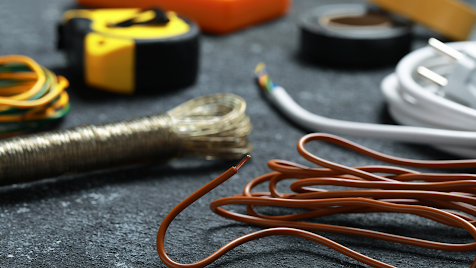What are conductors and insulators?
Conductors and insulators are two materials that play an important role in the flow of electricity. A conductor is a material that easily allows electricity to pass through it, while an insulator is a material that does not allow electricity to pass through.
Conductors are usually made of materials such as copper, aluminum, silver, or gold. These metals can conduct electricity easily because they contain free electrons which move quickly and allow current to flow. Insulators, on the other hand, are usually made of materials such as rubber, glass, plastic, or ceramic. These materials do not contain free electrons and therefore do not allow current to pass through them.
Conductors and insulators have many applications in our everyday lives. For example, electric wires are made of copper because it is an excellent conductor of electricity. Insulators are used in many appliances to protect us from electric shock. They also help prevent overheating of electrical components and protect us from dangerous electrical currents.
Read: What is Electricity?
How does electricity flow?
Electricity is a form of energy that flows in a circuit. To understand how electricity works, it is important to understand the concept of an electrical circuit. An electrical circuit consists of a conductor and an insulator. A conductor is any material that allows electrons to flow freely, while an insulator is any material that prevents or restricts the flow of electrons.
The way electricity moves is actually very simple. Electrons move from a negatively charged object to a positively charged object. When two objects are connected by a conductor, the electrons will move between them as long as there is a difference in charge between them.
This kind of flow of electrons movement can create an electric current. This electric current can then be used to power devices such as lights, computers, and more.
Read: Wireless Electricity
What happens when a conductor and an insulator touch?
When a conductor and an insulator come into contact, electricity will not be able to flow between them. This is because the insulator is not able to conduct electricity and the conductor is unable to release it. However, there can still be an electrical exchange between the two materials. This exchange is due to the transfer of electrons from the conductor to the insulator. This transfer of electrons creates an electrical field that can cause a spark or other reaction.
For example, when you touch a metal doorknob with a plastic comb, the comb will become statically charged and can even cause a spark. This is because the metal doorknob is a conductor and the plastic comb is an insulator. The metal doorknob releases electrons, which are attracted to the plastic comb and cause it to become statically charged.
The same phenomenon can occur in electrical circuits as well. If an insulator is used in an electrical circuit, then it can prevent electrons from flowing through it. This means that the current will be blocked and cannot flow through the insulator.
In conclusion, when a conductor and an insulator touch, electricity will not be able to flow between them. However, an electrical exchange can still occur due to the transfer of electrons from the conductor to the insulator.
Read: Electric Cars
Why are some materials better conductors than others?
The ability of materials to conduct electricity depends on their atomic and molecular structure. Materials with loosely bound electrons, such as metals, are generally good conductors of electricity because their electrons can easily move around and carry electric current.
On the other hand, materials with tightly bound electrons, such as plastics and rubber, are generally bad conductors of electricity because their electrons are held more firmly in place and cannot move around to carry electric current.
The number of free electrons also plays a role in determining the electrical conductivity of a material. Materials with more free electrons are better conductors than those with fewer free electrons. Metals, for example, have more free electrons than nonmetals, so they tend to be better conductors. Other factors that can influence the electrical conductivity of a material include its temperature, pressure, composition, and density.
In general, materials that are good electrical conductors are used in applications where electricity needs to flow quickly and efficiently. This includes circuits, wires, and cables in electronics, as well as the power lines used to transmit electricity over long distances. Materials that are poor electrical conductors are typically used for insulation or for blocking the flow of electricity in certain situations.
Read: Electric Grid
How can we use conductors and insulators in our everyday lives?
We use conductors and insulators every day without even realizing it! Conductors are used in a wide variety of applications, from the power cords that connect our devices to the electricity grid to the wires inside our walls. Insulators are also used in our homes to keep us safe and comfortable.
For example, most electrical appliances have plastic or rubber insulation around their wires and components to keep them from coming into contact with each other. This protects us from electric shocks and other dangerous situations. Additionally, when installing new electrical wiring, electricians often use metal conduits to protect the wires from moisture, dust, and other environmental elements.
Conductors and insulators can also be used outside of the home. For instance, car tires are made from a combination of rubber and metal to help provide a good grip on the road while also protecting us from electrical shock. In industrial settings, certain types of materials are used as insulators to help prevent fires and explosions.
Ultimately, conductors and insulators are essential components of modern life. Knowing how they work and how to use them safely is essential for everyone!
Read: Dams and Electricity

Comments
Post a Comment